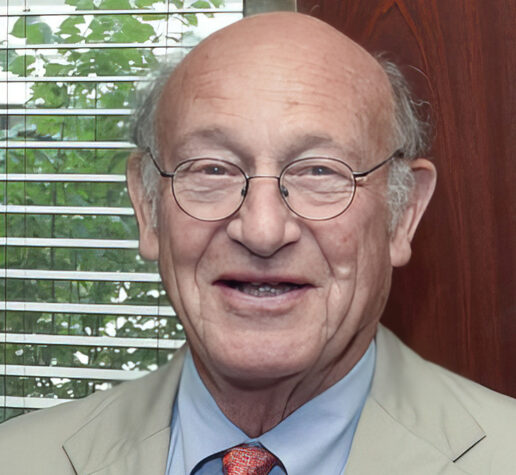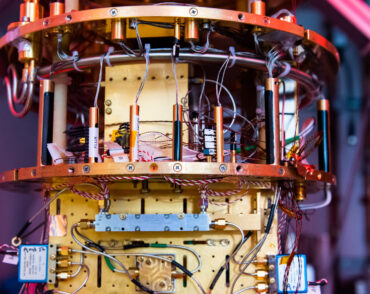
Donald “Bruce” Montgomery, influential electromagnet engineer, dies at 89
Longtime MIT researcher and former associate director of the Plasma Science and Fusion Center contributed to fusion energy progress on campus and around the world.
Donald “Bruce” Montgomery SM ’57, a highly influential engineer and longtime MIT researcher whose career was focused on the development of large-scale electromagnets, died on July 1. He was 89.
Montgomery’s contributions have been pivotal for numerous major facilities in fusion energy, in the design of magnets for particle accelerators for physics and medical applications, for magnetically levitated transportation, and in many other disciplines. He was a recognized international leader in magnet design and fusion engineering, a member of the National Academy of Engineering, and recipient of numerous awards including the Dawson Award for Excellence in Plasma Physics Research (1983) and the Fusion Power Associates Distinguished Career Award (1998).
Montgomery graduated with a BA from Williams College and an MS from MIT in the Department of Electrical Engineering in 1957. In 1967 he received an ScD from the University of Lausanne.
Following his graduation from MIT he joined the staff of MIT Lincoln Laboratory, and shortly after began work on high-field magnets under Francis Bitter, renowned magnet designer and founder of the National Magnet Laboratory at MIT. Montgomery rose to become the associate director of what was later renamed the Francis Bitter National Magnet Laboratory. During this period he authored the book “Solenoid Magnet Design: The Magnetic and Mechanical Aspects of Resistive and Superconducting Magnets,” which remains a standard reference.
A turn toward fusion
Montgomery’s expertise was next harnessed to a growing program in fusion energy. Following the measurement of plasma temperatures exceeding 10 million degrees in the Soviet T3 tokamak, a race was on to build ever more capable magnetic confinement experiments. Working with Bruno Coppi of MIT’s physics department and Ron Parker from electrical engineering, Montgomery led a team that designed and constructed two tokamak devices capable of operating with magnetic fields up to and exceeding 12 Tesla, still today an unprecedentedly high magnetic field for fusion research. The initial device, known as Alcator A, set a world record for the key plasma confinement metric. The follow-on device, Alcator C, extended this record in the 1980s and gave confidence that plasma conditions sufficient for a fusion power plant could indeed be achieved.
The record-setting performance by both devices was made possible by the use of breakthrough magnet technology developed with Montgomery’s insight and leadership. One can draw a straight line between these early breakthroughs in magnet technology and the resultant scientific progress that they enabled to the further evolution of magnet technology being used in SPARC, a demonstration fusion device led by MIT and startup company Commonwealth Fusion Systems that is designed to produce more energy than it consumes.
Montgomery also had a well-recognized ability to manage very large projects and to lead diverse groups of scientists, engineers, technicians, and students. As a result he was appointed chief engineer on several national fusion system construction projects and had a leadership role in the early days of the international fusion project known as ITER. In the 1990’s he led one of the three national consortia teams vying to develop maglev technology under the U.S. Department of Transportation Maglev Initiative.
Creating a revolutionary cable
While at the National Magnet Lab, Montgomery, Henry Kolm, and Mitch Hoenig invented the concept for the cable-in-conduit-conductor (CICC). In those early days of large-scale superconducting magnet research, large-bore, high-field superconducting magnets were built in a type of brute-force method. These older designs were unstable and unsuitable to the need for ever higher magnetic fields, and larger sizes increase the performance of magnetic confinement fusion machines. This technology was impeding advancement, especially for the tokamak’s poloidal field magnets which were required to deliver rapidly changing fields.
Montgomery, Kolm, and Hoenig solved these problems by combining many superconducting wires into a cable, using standard industrial equipment, and then putting the cable inside a steel or other high strength metal alloy tube (conduit). The magnet was cooled down and maintained at 4K by flowing supercritical helium within the conduit. Since each conductor could be insulated against high voltages, large-bore, high-field, high-stored magnetic energy magnets could be safely protected from quench. The strong metal alloy conduit provided high mechanical strength distributed most optimally throughout the winding cross-section. And the flowing helium provided excellent heat transfer from all the superconducting wires in the cable, resulting in very high electrothermal stability, especially for fast ramped magnets.
Although the CICC concept was deemed heretical within the international applied superconductivity community and dismissed as impractical, under Montgomery’s leadership the MIT group rapidly developed and proved the concept. Today, every working fusion device in the world that uses superconducting magnets employs this conductor, including tokamaks (e.g., EAST, KSTAR, JT60-SA), helical machines (LHD), and stellarators (Wendelstein 7-X). It is the baseline conductor design for ITER and has found application in particle accelerators and magnetic levitation.
Exploring magnetic levitation and propulsion
In the 1970’s, Montgomery and Kolm from the Francis Bitter Magnet Laboratory collaborated with Richard Thornton from the MIT Department of Electrical Engineering in formulating the “magplane” concept of magnetic levitation and propulsion. An early demonstration of a model scale device was built and tested on MIT’s athletic fields. Montgomery and Henry Kolm later founded Magplane Technology, Inc. (MTI) a small company focused on developing advanced applications of magnetic levitation and propulsion. A working version of this technology was built in China, where it was used to deliver coal from coal mines, avoiding the excessive coal dust and waste resulting from open trucking vehicles. In the 1980’s, Montgomery worked with Peter Marston and Mitch Hoenig, leading an MIT team developing very large-scale superconducting magnets for magnetohydrodynamic electric power generation.
Engineers and scientists know that failure can be the best instructor. Montgomery took that lesson to heart, diagnosing failure mechanisms in large magnet systems and authoring several meta-studies which analyzed and tabulated the underlying causes. This work allowed engineers to focus on the most critical aspects of their designs and contributed to the growing reliability of research magnets. After his retirement from MIT in 1996, Montgomery was the founder and president of MTECHNOLOGY Inc., an engineering consultancy which specializes in risk and reliability.
An engineer’s engineer
Joe Minervini, one of Montgomery’s proteges, notes: “Bruce was considered by me and most people who knew him to be an ‘engineer’s engineer.’ Although he always possessed a deep scientific understanding of the technology problem he was attacking, he always seemed to formulate a brilliant but practical engineering solution. Over his long career at MIT, he demonstrated this time and again on many of the most advanced and challenging new technologies built around conventional and superconducting magnets.”
Beyond the breadth of his technical contributions and committed mentorship, Bruce Montgomery will be remembered for his warm personality and his calm, steady demeanor, which was of inestimable value when things got tough — a common occurrence when pushing the envelope in research. He had a unique ability to take control of contentious technical and management discussions and to gently pull or push everyone to an effective consensus and into action. He will be sorely missed by his friends, family and colleagues.
Montgomery is predeceased by his wife of 52 years, Nancy Ford Fenn, who passed away in 2006, and by Elizabeth Bartlett Sturges, with whom he spent many happy years until her passing in 2021. He is survived by his son Timothy Montgomery and his wife Susan of Scituate, Massachusetts; daughter Melissa Sweeny and her husband Tom of Groton, Massachusetts; as well as his grandchildren, Jenna Sweeny, Christopher Sweeny, and Benjamin Sweeny.


